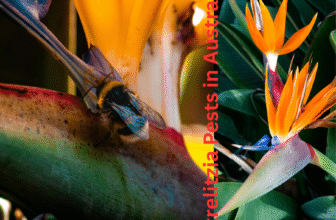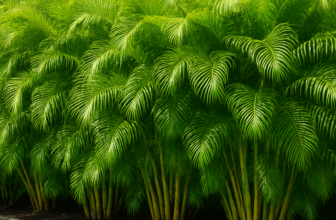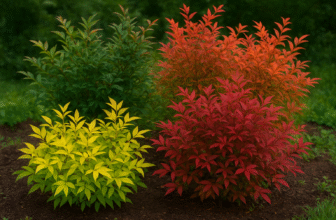Introduction:
As a plant enthusiast, I always seek unique and striking additions to my indoor garden. One of my favourite finds is the pagoda succulent. This succulent stands out in any collection with its distinctive structure and vibrant colours. It brings a touch of elegance and intrigue to any space. Let’s dive into what makes the pagoda succulent unique, its varieties, and its beautiful color shades.
What is the Pagoda Succulent?
The pagoda succulent, or Crassula perforata, is a captivating plant characterized by its stacked, pagoda-like appearance. Each leaf grows in a spiral around the stem, creating a series of tightly packed, geometric shapes that resemble a pagoda tower. This unique growth pattern makes it an eye-catching addition to any plant collection.

The Importance of Pagoda Succulents
- Aesthetic Appeal: The pagoda succulent’s architectural structure and vibrant colors make it a stunning focal point in any arrangement. Its striking form adds visual interest and can elevate the overall aesthetic of your indoor garden.
- Easy Maintenance: Like many succulents, the pagoda succulent is low-maintenance. It requires minimal watering and can thrive in various light conditions, making it an ideal plant for beginners and experienced gardeners.
- Space-Saving: The pagoda succulent’s compact growth habit makes it perfect for small spaces. Whether on a windowsill, desk, or shelf, it adds greenery without taking up much room.
- Air Purification: Succulents are known for their air-purifying qualities. By adding a pagoda succulent to your home, you’re not only enhancing your decor but also contributing to a healthier indoor environment.
Varieties and Color Shades
The pagoda succulent comes in several varieties, each offering a unique twist on the classic pagoda shape. Here are a few popular types:
- Crassula perforata ‘Variegata’: This variety features green leaves with creamy white edges. The variegation adds a delicate touch to the plant, making it even more attractive.
- Crassula perforata ‘Giant Pagoda’: As the name suggests, this variety grows more significantly than the typical pagoda succulent. Its leaves are more robust, making it a striking statement piece.
- Crassula perforata ‘Ivory Pagoda’: Known for its pale, almost ivory-colored leaves, this variety offers a softer look while maintaining the pagoda succulent’s characteristic structure.

Color Shades
The beauty of the pagoda succulent lies not just in its shape but also in its vibrant color palette. Here are some standard shades you might find:
- Green is the most common color, ranging from light to dark green. Green leaves often have red or pink edges, adding a pop of color.
- Red and Pink: Under bright light, the edges of the leaves can turn shades of red or pink, creating a beautiful contrast with the green centers.
- Yellow and Cream: Variegated varieties often feature yellow or cream edges, providing a lovely, light-hued contrast.
- Gray and Blue: Some varieties have a more muted palette, with leaves that use grey or blue tones. These subtle shades add a sophisticated touch to your collection.
Caring for Your Pagoda Succulent
Caring for a pagoda succulent is straightforward, making it an excellent choice for plant lovers of all levels. Here are some tips to keep your pagoda succulent thriving:
- Light: Provide bright, indirect light. Too much direct sunlight can scorch the leaves, while too little light can lead to leggy growth.
- Watering: Allow the soil to dry out completely between waterings. Overwatering can lead to root rot, so it’s better to err on the side of underwatering.
- Soil: Use a well-draining succulent mix. This helps prevent water from sitting in the soil and causing root issues.
- Temperature: Pagoda succulents prefer warm temperatures and can be sensitive to cold. Keep them where temperatures remain above 50°F (10°C).
- Propagation: Pagoda succulents are easy to propagate. Take a cutting, let it dry for a few days, and plant it in well-draining soil.

Pagoda Succulents: Real and Artificial Options
The pagoda succulent is a stunning plant that can significantly enhance any decor with its unique shape and vibrant colors. However, you don’t have fresh pagoda succulents or prefer a low-maintenance alternative. In that case, artificial succulents are a fantastic option. Let’s explore how to decorate with natural and artificial pagoda succulents to create beautiful indoor spaces.
Real Pagoda Succulents
Advantages:
- Natural Beauty: Real plants bring a sense of life and natural beauty to any space.
- Air Purification: Live succulents can help purify the air, creating a healthier indoor environment.
- Growth and Change: Watching a plant grow and change over time adds a dynamic element to your decor.
Decorating Tips:
- Desk and Shelf Decor: To add a touch of greenery, place a small pagoda succulent on your desk or a shelf. Its compact size makes it ideal for small spaces.
- Miniature Gardens: Create a miniature garden by combining several pagoda succulents in a shallow dish or pot. Add decorative stones or miniature figurines for added charm.
- Hanging Displays: Use hanging planters to display your pagoda succulents. The trailing growth pattern looks beautiful, cascading from elevated positions.
- Window Sills: Line up several pagoda succulents on a sunny window sill. The natural light will enhance their colors and growth.
Artificial Pagoda Succulents
Advantages:
- Low Maintenance: Artificial succulents require no watering, sunlight, or special care, making them perfect for busy individuals or low-light spaces.
- Long-lasting: They maintain their appearance indefinitely, providing a constant source of beauty without the risk of dying.
- Versatility: Artificial plants can be placed anywhere, regardless of light conditions, temperature, or humidity.
Decorating Tips:
- Mix and Match: Combine artificial pagoda succulents with natural plants to create a diverse and exciting display. This can add variety and reduce maintenance.
- Office Spaces: Place artificial succulents in your office where natural light may be limited. They can brighten up your workspace without the need for constant care.
- Seasonal Decor: Use artificial succulents in seasonal arrangements. Combine them with other decor items like pumpkins in the fall or ornaments during the holidays.
- Unusual Containers: Get creative with containers. Hold your artificial pagoda succulents in teacups, glass jars, or wooden boxes. These unique holders can add a personalized touch to your decor.
- Wall Art: Arrange artificial succulents in frames or wall-mounted planters to create a vertical garden or wall art. This can turn a plain wall into a vibrant focal point.

Combining Real and Artificial Succulents
Blended Arrangements:
- Create mixed arrangements using both natural and artificial pagoda succulents. This allows you to enjoy the benefits of natural plants while minimizing maintenance with the addition of artificial ones.
- Use real succulents in easily accessible spots where you can tend to them regularly, and place artificial ones in harder-to-reach areas.
Visual Cohesion:
- Ensure that the artificial succulents you choose closely resemble the absolute pagoda succulents in color and texture. This will create a cohesive and realistic look.
- Incorporate decorative elements like rocks, moss, and driftwood to enhance the natural appearance of your mixed arrangements.
Conclusion:
The pagoda succulent is a unique and beautiful addition to any indoor garden. Its distinct structure and vibrant colors make it a standout plant that can enhance any space. With its easy maintenance and various attractive varieties, it’s no wonder the pagoda succulent has become a favorite among plant enthusiasts. Suppose you’re looking to add a touch of elegance and intrigue to your collection. In that case, the pagoda succulent is worth considering. Happy planting!
Frequent Asked Questions:
Do you take care of a pagoda succulent?
- Yes, it involves providing proper light, watering, and soil conditions.
How often should I water a Red Pagoda?
- Water it every 2-3 weeks, allowing the soil to dry out completely between waterings.
How do I know if my succulent needs sun?
- If the leaves start to stretch out and lose their vibrant color, they likely need more sunlight.





